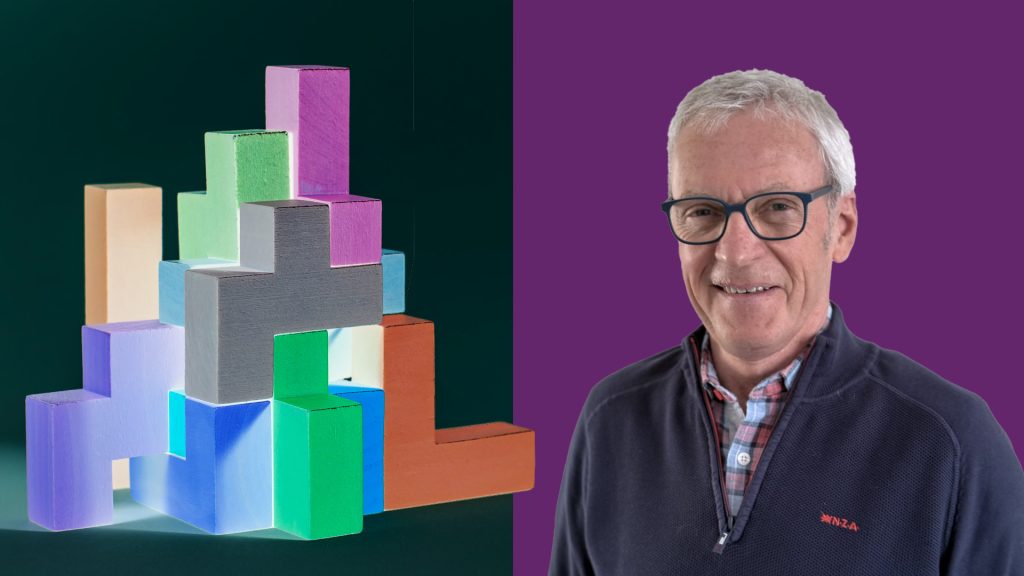We ask five leading AEC software developers and four startups to share their observations and projections for BIM 2.0
Breaking the compromise in digital project delivery
Erik de Keyser, co-founder, Qonic
For years, the AECO industry has struggled between big ambitions and everyday challenges. While many envision a future of smooth, high-performing digital project delivery, most professionals are stuck with tools that fall short — locked into compromises that waste time, money, and creativity.
Qonic wasn’t intended to be a better version of what came before. We started by asking: what if we could remove the compromises entirely?
Find this article plus many more in the March / April 2025 Edition of AEC Magazine
👉 Subscribe FREE here 👈
The industry’s impasse
In recent years, the AECO industry has clearly voiced what’s holding back the future of digital project delivery. Open letters and software specs have highlighted the challenges and hopes for change. However, new tools merely put a fresh coat of paint on old problems, making minor improvements without addressing core inefficiencies.
Qonic was founded on the belief that patching old systems isn’t enough. The AECO industry needs a complete reset, a chance to rethink what’s possible and achieve new levels of efficiency.
Every day, designers, engineers, and constructors lose valuable time waiting for data, fighting interoperability issues, and over-investing in hardware that underperforms.
Teams fragment their information across multiple files and tools, sacrificing collaboration and clarity in the process.
At Qonic, we asked a simple question: what if we could start over? What if we could remove the bottlenecks of outdated tools and workflows, giving professionals back control? It’s not about adapting to legacy constraints, it’s about eliminating them altogether.
An evolution, not a revolution
Qonic started from a blank sheet, totally free from any legacy constraints. However, change is hard, and the industry has been through this before. The shift from hand- drawn lines to object-based modelling took years. Qonic understands that real change has to be as smooth as it is significant.
That’s why Qonic doesn’t just offer a clean slate, it offers a clear path forward. Its foundation is built on solid modelling and data handling that surpasses existing solutions while remaining accessible to existing workflows. Legacy models can be upgraded instantly and large 3D models that once took minutes to open now stream seamlessly.
The core principles of Qonic
We are guided by three core principles we believe will shape a better way forward:
- 3D solid modelling without limits
- Open and flexible interoperability
- Cloud-first collaboration
3D solid modelling without limits
One area ripe for change is 3D modelling. While many tools focus on early-stage conceptual design, Qonic delivers end-to-end capability, robust, high-performance solid modelling that works for the entire lifecycle of a project.
Traditionally, professionals have had to choose between flexibility and precision: free- form modelling tools for creative design or object-based modelling tools built for intelligent, data-rich models. At Qonic, we believe it is possible to combine the best of both worlds. Qonic is developing a unified modelling environment where designers can nimbly navigate between the two approaches:
Direct modelling: Users can push and pull the geometry freely, ensuring full accuracy and flexibility, not forcing you to adapt to the limitations of the software. Complex geometry? No problem. NURBS and solids are at the core, ensuring precision from concept through construction.
Intelligent modelling tools: With so-called automated modelling ‘procedures’, you streamline the development of real-life building systems. Combined with manufacturer details stored in structured libraries as components, Qonic enables high-detail 3D modelling with advanced automation.
Open and flexible interoperability
Qonic speaks the language of today’s most widely used design tools:
- Native import of Rhino and SketchUp models.
- Seamlessly handling Revit import and export.
- For structural, MEP, and other disciplines, full IFC support
But integration is just the start. Qonic transforms traditional file-based workflows into a database-driven approach. Instead of monolithic files, each BIM model becomes a dynamic collection of assemblies, subassemblies, and individual parts, where geometry and data are intrinsically linked and easily accessible.
For Qonic, openness also means the possibility to distribute this geometry and data using Application Programming Interfaces (API), and free it from monolithic BIM silos.
Taking a platform approach, Qonic empowers users to build custom workflows tailored to their specific needs, while maintaining full control over their data.
Collaboration without constraints
Qonic’s cloud-first platform was built to simplify how teams work together, no matter their location or role:
Effortless collaboration: Projects scale smoothly without friction, and unlimited team members can securely access the data they need.
Granular permissions: Fine-grained access controls ensure the right people have the right access at the right time, maintaining both security and control while enabling seamless collaboration.
Integrated conflict resolution: Built-in conflict resolution ensures that design and execution remain in perfect sync. Complete project histories and versioning allow teams to trace their steps and move forward with confidence.
Streamlined coordination: With built-in workflows for clash detection and issue management, Qonic enables teams to discover, discuss, and resolve coordination issues effortlessly, without disrupting workflows.
A new standard, not just another tool
Qonic isn’t aiming to be “Revit 2.0” or the next evolution of yesterday’s ideas. It’s about helping the industry rethink how digital project delivery can work when freed from unnecessary compromises. It represents a fundamental shift in digital project delivery, one that gives designers, engineers, and constructors the tools they’ve always needed.
By combining solid modelling, open interoperability and cloud collaboration, Qonic aims to make it easier for architects and contractors to model designs and deliver project outcomes (reports, drawings, etc.) with unparalleled accuracy, flexibility, detail, and intelligence.
And this is just the beginning. The structured, data-rich models created in Qonic provide a solid foundation for AI and machine learning. As models accumulate detailed geometry and information, machine learning algorithms analyse patterns, optimise workflows, and automate repetitive tasks. We are already delivering today our neural network capable to recognise 3D geometry and add missing classification information.
Our future roadmap
Qonic isn’t just solving today’s challenges — it’s building a foundation for the future of digital project delivery. Qonic is an agile, forward-thinking team, from both industry and with prior AEC tool development experience. We’re completely self-funded, built by industry experts, and free from investor or shareholder pressure to release an incomplete product.
With rapid development cycles and a commitment to redefining AECO software, Qonic continues to push boundaries, from automated drawing generation to a model quality hub. For those ready to leave compromise behind, Qonic isn’t just a platform. It’s an invitation to rethink what’s possible in digital project delivery.
Read more opinions
The startups
 Breaking the compromise in digital project delivery
Breaking the compromise in digital project delivery
Erik de Keyser, co-founder, Qonic
 Beyond Buzzwords: the real future of BIM
Beyond Buzzwords: the real future of BIM
Paul O’Carrol, CEO, Arcol
 Beyond Legacy Thinking
Beyond Legacy Thinking
Altaf Ganihar, founder and CEO, Snaptrude
 BIM 2.0: why it’s time to reinvent the tools that power the built world
BIM 2.0: why it’s time to reinvent the tools that power the built world
Amar Hanspal, CEO, Motif
The established players
 Embracing AI and Boosting Sustainability Across Project Lifecycles
Embracing AI and Boosting Sustainability Across Project Lifecycles
Daniel Csillag, CEO, Graphisoft
 AI: Our Generation’s Paradigm Shift
AI: Our Generation’s Paradigm Shift
Tom Kurke, VP, Ecosystems & Venture, Bentley Systems
 The Future of BIM: Harnessing the Power of Data
The Future of BIM: Harnessing the Power of Data
Amy Bunszel, executive VP of AEC Solutions, Autodesk

Unlocking the Future of BIM with Interoperability
Mark Schwartz, SVP, Trimble
 Design transformed: 2025 predictions from Vectorworks
Design transformed: 2025 predictions from Vectorworks
Dr. Biplab Sarkar, CEO, Vectorworks






